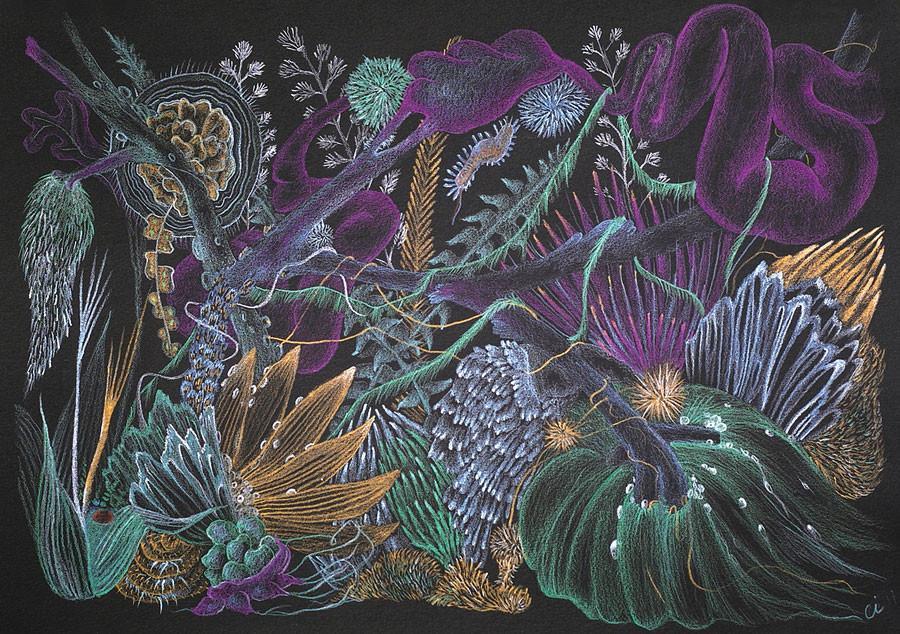
For her first solo exhibition, Candan İşcan deals with the question of art and science. İşcan transforms the knowledge of science into art and positions herself as a naturalist. Her inspirations come from nature, medicine, and evolution. Her works depict a story that belongs to life and also to human being. She works meticulously and carefully for hours on a drawing. Much of this is probably a result of the routine inclusion of her work created as a person of science.
İşcan’s solo show, curated by Baran Akkuş, “Flowers of the Night” at Istanbul’s REM art space is gathering her 32 works depicting a different kind of a nature perception.
“What I am trying to do is to open a new dimension between reality and fiction. I am trying to question how real nature is,” she said, adding that she transforms each figure from nature and makes it a different figure.
According to İşcan, we are all part of nature, but nature seems to be something that we push away and romanticize. “In fact, we are all part of it,” she said, “and still searching for it.”
On the other hand, it is a fact that human beings search for the truth in nature and that’s why she tries to deconstruct categories and construct them again. Meanwhile, she asks us, what if all the beings in nature are not categorized as it is, what would happen? That’s why we see decomposed human limbs, organs, flowers and plants in İşcan’s works.
İşcan looks at medicine, human anatomy and science as an artist and tries to create her version of it. That’s why she decomposed limbs and plants are an essential part of depicting her artistic endeavor. Beyond this irony, there is a sharp sense of intrigue that seduces the eye and confuses the mind with wonder. Looking at her works, the viewer discovers a different depiction of the world that is born again and again. This can only be possible by de-categorizing and deconstructing the species.
“Contrary to daily life’s momentum, my creative process is slow. My patterns carry physical features, and my images are detailed. Sometimes each drawing gets clear as my thought process withdraws,” she said.
During this process what she creates becomes a part of her. “I do not know how the thought process starts and ends as I draw. I can say I keep myself in the process all the time.”
Nature’s specimen
İşcan’s specimen comes from nature and as she creates she adds new features and characteristics. Rather than the landscape, all we see is the species that are changing. Her ceramic works’ tone is more elegiac than existential. All the species created with ceramic and polymer clay are part of her stance as an artist. “I like creating three-dimensional works. My creative process changes as I work with these little sculptures,” she said.
Once again she shows us the exhibition does not deal what is going to extinct, on the contrary, it focuses on how it is essential to believe that nature’s power to live forever and ability to construct and deconstruct. The extinction we see comes with a rebirth of nature. As the character is reborn again and again the new species will always come along, and there will be a new life on earth.
“This exhibition is not about hopelessness. It refers to rebirth. Even though the nature changes, there is a clue that it will always live with its wild beauty,” said İşcan, and that’s what I am willing to explain, she added.